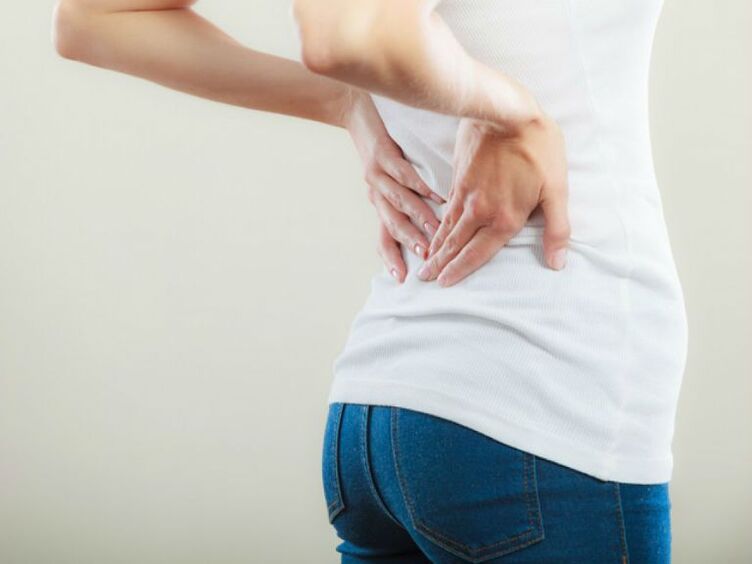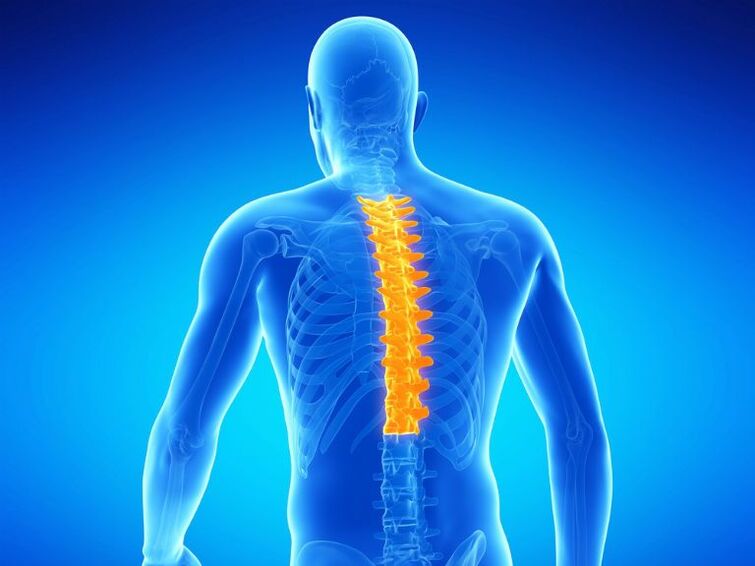Today, experts around the world are looking for ways to fight spinal disorders. Unfortunately, severe back pain warns almost everyone after the age of thirty. The main cause and effect of pain lies in various neurological disorders. The most common of these is osteochondrosis. Therefore, everyone needs to understand what osteochondrosis is, its causes and symptoms, and how to treat it.

What is osteochondrosis
Osteochondrosis negatively affects not only the spine itself, but also its tissues and discs. They "squeeze" and gradually lose their elasticity. As a result, they deform and displace, pinching the nerves in the spinal cord.
Advanced stages of the disease can bring serious complications that can later lead to disability. Therefore, a serious disease is osteochondrosis, and everyone needs to know its symptoms:
- Cutting and shooting pain in the spinal muscles.
- There is numbness in the limbs.
- Headache (starts at the back of the head and can spread to the temples and top of the head).
- Neck pain worsens with exercise.
- Dizziness and frequent fainting.
- Colorful spots with "flies" in the eyes.
- Heart pain and pain can be felt in other organs near the heart.
- Salt deposits.
- The skin is peeling off.
- Increased/decreased sweating.
Causes of osteochondrosis:
- Has spinal injury.
- have a genetic predisposition.
- Metabolic disorders (deficiency of trace elements).
- in the case of obesity.
- Suffering from an infectious chronic disease.
- During physiological changes in the body (aging).
- Continually exhibit intense physical exertion.
- flatfoot.
External factors that cause the disease to appear:
- Keep bending over.
- Different degrees of curvature of the spine.
- Lifting capacity.
- inactive lifestyle.
- Often stressed.
- hormone imbalance.
- during strength training.
Osteochondrosis most commonly affects older adults. Many people don't even know that lifting heavy objects can cause disc prolapse. So, if you must pick up heavy objects, it's after squatting.
cervical osteochondrosis
Cervical osteochondrosis is caused by improper metabolic activity.
Main symptoms:
- Pain in the neck and back of the head.
- A feeling of muscle weakness.
- There is a creaking sound when turning head.
- Frequent headaches or dizziness.
- Exhausted.
- persistent fatigue.
Osteochondrosis of the neck is characterized by pain that spreads to the back of the head. Often, the disease causes not only worsening of vision, but also heart and lung function. So in order to stop progress, you need to "fight" faster.
Complications are very insidious. Significant changes in the vertebrae are evident: the normalization of blood supply to the blood vessels in the brain is disrupted, leading to migraine headaches. If late stage is observed, the spinal cord is compressed, and as a result - death. Therefore, what is osteochondrosis, its causes and symptoms, and treatment is important for everyone to prevent serious consequences.
thoracic osteochondrosis
Thoracic osteochondrosis is less common. The chest has many nerve endings. They are responsible for normalizing the activities of other agencies. Osteochondrosis of the chest causes the heart and stomach and lungs to fail in their activity cycles. The main symptoms and signs are:
- Pain in shoulder blades, abdomen, chest, heart.
- There is a tight feeling in the chest.
- There may be signs of indigestion or bloating.
- Numbness in the limbs.
- "Goosebumps" on the skin.
Basically, the increase in pain occurs at night, especially when walking, coughing. Attacks on fear of death may manifest repeatedly.

If left untreated, this disease can lead not only to some complications but also to disability. Complications include:
- Thoracic spine protrusion.
- Spinal cord compression.
- Activities that violate internal organs.
- Intercostal neuralgia.
lumbosacral osteochondrosis
Osteochondrosis of the lumbosacral vertebra is characterized by severe pain in the lumbar region. It is exacerbated after the body is too cold or due to physical overload. Signs of this disease can be understood by the following symptoms:
- Low back pain that "radiates" downward (the nature of pain is pain).
- "Lens".
- "Polish" on the legs.
Induced root cause:
- inactive lifestyle.
- hormone imbalance.
- Significant deviation of the musculoskeletal system (curved legs, flat feet).
- Poor diet, stress, lack of sleep.
Lumbar osteochondrosis has fairly serious complications:
- The spinal cord is affected.
- "cauda equina" syndrome.
- Limbs may be paralyzed.
How to Treat Osteochondrosis
Many people who know firsthand what osteochondrosis pain is will ask the question: "How is osteochondrosis treated? ". Experts at world-renowned specialist clinics guarantee that in the first stage of osteochondrosis not only a cure, but also a complete restoration of the function of the spine. In cases where help is sought later, in stages 3-4 of the disease, doctors can only slightly improve the patient's health. After all, the disease creates bone growths and therefore changes in the shape of the spine. Positive changes can only be observed with surgical intervention.
"How to treat? " - this is the first question a patient asks a doctor. Today, osteochondrosis can be cured in three ways: medication, surgery, and physical therapy. If you've been diagnosed with osteochondrosis, at-home treatment may offer additional benefits. Therefore, the load on the spine should be reduced to "none", insist on bed rest, and replace the soft mattress with a hard surface. Doctors prescribe medicines to relieve inflammation and swelling. You can also use ointments, gels, and creams.
Positive results can lead to complex treatments. Therefore, if a patient has osteochondrosis, the drug should not be just the type of drug. Physiotherapy measures are also required: ultrasound, electrophoresis, magnets, etc. As they say: aware, then armed - a real confirmation that everyone should know what osteochondrosis is, its causes and symptoms, and treatment.
What is Corrective Gymnastics for Osteochondrosis
Every patient should know what corrective gymnastics for osteochondrosis is - an effective recovery therapy. Be sure to stick to the fundamentals: regularity and proper execution. After all, irregularities can be harmful and even make the condition worse. If done correctly, you will feel:
- Eliminate pain and cramps.
- Restore mobility of the spine.
- Strengthen weak muscles.
- Normalization of microcirculation and nutrition of vertebral structures.
- Compression reduction.
Anyone with osteochondrosis should exercise regularly. In addition, the following activities are recommended:
- Morning and industrial gymnastics.
- LFK complex.
- swimming.
- Traction of the spine.
- Self massage.



















